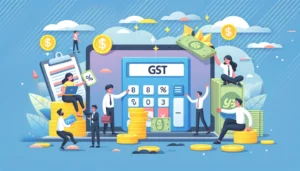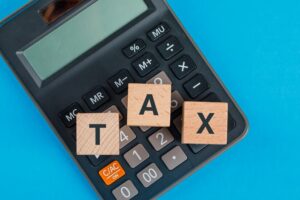Navigating GST for Restaurants Opting for the Composition Scheme
- 20 Sep 24
- 13 mins

Navigating GST for Restaurants Opting for the Composition Scheme
- Understanding the GST Percentage for Restaurants and Hotels
- Exclusions from the GST Composition Scheme for Restaurants
- Exclusions from the GST Composition Scheme for Restaurants
- Determining GST Applicability for Restaurants in the Composition Scheme
- Advantages and Challenges of GST for Restaurants in the Composition Scheme
- 5 Key Insights on GST for Restaurant Services Under the Composition Scheme
Key Takeaways
- Restaurants in the GST Composition Scheme pay a fixed 5% tax rate without claiming input tax credits, offering simplicity but with eligibility restrictions.
- GST rates for regular restaurants vary from 5% to 18%, influenced by factors like air-conditioning and alcohol service, while hotels face tariffs-based GST rates.
- Restaurants serving alcohol, engaging in inter-state sales, or selling through e-commerce platforms are excluded from the GST Composition Scheme.
- Exiting the GST Composition Scheme involves filing specific forms and transitioning to regular GST compliance, triggered by voluntary choice, turnover exceedance, or operational changes.
- While the GST Composition Scheme simplifies tax compliance and lowers tax rates for eligible restaurants, it imposes restrictions on claiming input tax credits and limits certain business activities.
Understanding the GST Percentage for Restaurants and Hotels
Under the GST regime in India, restaurants and hotels are subjected to varying GST rates based on certain criteria. For restaurants opting for the GST Composition Scheme, the rate is simplified to a uniform 5%, applicable on their total turnover, without the ability to claim input tax credits. This rate is markedly lower than what could apply under the regular GST system, where the rate can vary from 5% to 18%, depending on factors such as whether the establishment is air-conditioned or serves alcohol.
Hotels, however, have a different set of GST rates that are primarily determined by the room tariffs, with the composition scheme generally not applicable to them. The tiered structure aims to align tax rates with service levels, making it vital for businesses in the hospitality sector to accurately assess their operations against GST criteria.
Exclusions from the GST Composition Scheme for Restaurants
Restaurants looking to benefit from the simplified tax process offered by the GST Composition Scheme need to be aware of certain exclusions. Firstly, restaurants that serve alcoholic beverages are not eligible for this scheme, as the sale of alcohol is governed by state laws and not included under GST. Secondly, restaurants engaging in inter-state supplies, meaning selling goods or services across state lines, cannot opt for the composition scheme.
This is designed to simplify tax compliance primarily for local businesses serving within their state's boundaries. Additionally, restaurants that conduct sales through e-commerce platforms are excluded from the scheme, targeting those who operate more traditional dine-in or takeaway services without reliance on third-party digital marketplaces. Understanding these exclusions is essential for restaurant owners to navigate GST compliance effectively and make informed decisions about their tax reporting strategy.
Exclusions from the GST Composition Scheme for Restaurants
Certain types of restaurant operations are specifically excluded from participating in the GST Composition Scheme, designed to simplify tax compliance for small businesses. These exclusions are set to ensure that the scheme remains tailored to the intended beneficiaries without complicating the GST framework. Key exclusions include:
- Restaurants Serving Alcohol: Establishments that serve alcoholic beverages are not eligible for the composition scheme. The sale of alcohol for human consumption is outside the purview of GST and is taxed by state governments, making such restaurants ineligible.
- Inter-state Sales: Restaurants that engage in inter-state sales, meaning they sell goods or services across state lines, cannot opt for the composition scheme. This scheme is intended for businesses that primarily operate within their own state to simplify tax compliance and administration.
- E-commerce Sales: Restaurants that conduct sales through e-commerce platforms, especially those which require the collection of tax at source (TCS), are also excluded from the scheme. This criterion aims to streamline the tax process for restaurants that conduct business through traditional means or direct online sales without third-party platforms.
- Non-resident and Casual Taxable Person : Restaurants owned by non-resident taxable persons or those operating on a casual basis (temporary stalls or setups) cannot opt for the composition scheme, as their business models do not align with the scheme’s intent of simplifying tax for regular, small-scale operators within a state.
These exclusions ensure that the composition scheme remains accessible to smaller, local restaurants that can benefit most from simplified tax procedures, while maintaining the integrity and efficiency of the GST system.
Determining GST Applicability for Restaurants in the Composition Scheme

Determining GST applicability for restaurants operating under the Composition Scheme involves understanding the specific tax rate applied and the nature of transactions covered. For restaurants eligible and opting into this scheme, the process is simplified as follows:
Fixed GST Rate: Restaurants under the Composition Scheme are subject to a concessional GST rate. As of the current guidelines, this rate stands at 5% of the turnover. This rate is significantly lower than the standard GST rates applicable to restaurants not in the scheme, which can be as high as 18% depending on various factors such as air-conditioning presence and alcohol service.
Inward Supplies: While the scheme offers a simplified outward tax rate, it's important to note that restaurants cannot claim Input Tax Credit (ITC) on their purchases or inward supplies. This means the tax paid on goods and services bought for the restaurant's use cannot be deducted from their payable tax, impacting the cost calculations and pricing strategies.
Outward Supplies: All outward supplies, including food, beverages (non-alcoholic, as alcohol is excluded from the scheme), and any ancillary services provided directly by the restaurant, are taxed at the simplified rate without the need for detailed invoice-wise tax calculations.
Scope of Supplies: The scheme restricts restaurants from making inter-state supplies or sales through e-commerce operators required to collect tax at source. The GST applicability is thus confined to local or in-state sales, aligning with the scheme’s goal of simplifying tax compliance for small-scale, local businesses.
Exiting the Composition Scheme: Reasons and Procedures
Exiting the GST Composition Scheme can occur for various reasons, necessitating a clear understanding of the procedures involved for a smooth transition. Here are the key reasons and steps involved in exiting the scheme:
Reasons for Exiting the Composition Scheme:
- Voluntary Exit: A business might choose to exit the scheme voluntarily if it wishes to avail of the benefits of the regular GST regime, such as claiming Input Tax Credit (ITC).
- Mandatory Exit: If a business exceeds the turnover threshold for the Composition Scheme (currently Rs. 1.5 crores for most businesses), it must mandatorily exit the scheme. Similarly, changes in business operations, such as starting inter-state sales or selling through e-commerce platforms, can necessitate an exit.
- Compliance Breaches: Non-compliance with the rules and regulations of the Composition Scheme, including incorrect tax payments or filings, can lead to forced exit from the scheme.
Procedures for Exiting the Composition Scheme:
- Filing Intimation: The business needs to file an intimation for withdrawal from the Composition Scheme using Form GST CMP-04 on the GST portal. This form should be filed within seven days of the occurrence of the event leading to the exit from the scheme.
- Filing Final Return: After intimating the withdrawal, the business must file a final return using Form GSTR-4 for the quarter during which the scheme is exited. This return should include all the transactions up to the date of exit from the scheme.
- Transition to Regular GST: Upon exiting the Composition Scheme, the business will be treated as a regular taxpayer under the GST regime. It needs to start issuing tax invoices for all outward supplies and file monthly or quarterly returns as applicable.
- Adjustment of Stock: The business is required to declare the stock on hand on the date of exiting the scheme using Form GST ITC-01. This declaration allows the
Advantages and Challenges of GST for Restaurants in the Composition Scheme

Advantages of GST for Restaurants in the Composition Scheme
- Simplified Tax Compliance: Restaurants under the Composition Scheme benefit from simplified tax procedures, including easier paperwork and annual return filing, which significantly reduces the administrative burden associated with GST compliance.
- Lower Tax Rate: Opting for the Composition Scheme allows restaurants to pay GST at a fixed rate of 5% on their annual turnover, which is typically lower than the tax rates under the regular GST regime, potentially leading to cost savings.
- Increased Cash Flow: With lower tax rates and simplified compliance, restaurants may experience better cash flow management, allowing them to allocate resources more effectively to other areas of the business.
- Ease of Business Operations: The simplicity of the Composition Scheme can be particularly beneficial for small and medium-sized restaurants, making it easier for them to focus on operational efficiency and customer service without being weighed down by complex GST regulations.
Challenges of GST for Restaurants in the Composition Scheme
- Ineligibility for Input Tax Credit (ITC): One of the major downsides is that restaurants cannot claim ITC on the GST paid on inputs or services, which could lead to higher operational costs that cannot be offset against tax liabilities.
- Restrictions on Business Operations: Restaurants in the Composition Scheme are restricted from making inter-state supplies or sales, which can limit expansion opportunities and restrict access to a broader market.
- No E-commerce Sales: The scheme prohibits restaurants from selling through e-commerce platforms, which could be a significant limitation given the growing trend of online food ordering.
- Turnover Limit Monitoring: Restaurants need to continuously monitor their turnover to ensure it does not exceed the threshold for the Composition Scheme eligibility, which can add an element of uncertainty and require periodic reassessment of their tax strategy.
| Aspect | Advantages | Challenges |
|---|---|---|
| Tax Compliance | Simplified procedures and annual return filing reduce the administrative burden. | Restaurants cannot claim Input Tax Credit (ITC) on GST paid for inputs or services. |
| Tax Rate | Lower fixed tax rate of 5% on turnover can lead to cost savings. | Mandatory continuous monitoring of turnover to ensure eligibility, adding uncertainty. |
| Cash Flow | Potentially better cash flow management due to reduced tax rates and simplified compliance. | Restrictions on business operations, such as inter-state supplies and e-commerce sales, limit market expansion. |
| Business Operations | Easier for small and medium-sized restaurants to focus on operational efficiency and customer service. | Prohibition against selling through e-commerce platforms limits access to the growing trend of online food ordering. |
| Market Expansion | - | The scheme limits restaurants to in-state operations, restricting access to broader markets. |
5 Key Insights on GST for Restaurant Services Under the Composition Scheme
- Eligibility Vigilance: Constantly monitor your restaurant's turnover to ensure it stays within the eligibility threshold for the Composition Scheme. Surpassing the limit requires a switch to the regular GST regime, impacting tax rates and compliance procedures.
- Assess Input Costs: Since restaurants under the Composition Scheme cannot claim Input Tax Credit, it's vital to carefully assess and manage input costs. Understanding how this affects overall profitability can help in pricing strategies and cost management.
- Stay Updated on Regulations: GST laws and rates are subject to periodic updates. Keeping abreast of any changes affecting the restaurant sector and specifically the Composition Scheme is crucial to remain compliant and optimize tax liabilities.
- Customer Pricing Strategy: The inability to charge GST directly to customers could be an advantage in price-sensitive markets. However, it’s important to communicate the benefits clearly to customers, explaining why GST is not added at the point of sale.
- Evaluate Long-Term Strategy: Regularly evaluate whether the Composition Scheme aligns with your restaurant's long-term growth and expansion plans. Restrictions on inter-state sales and e-commerce participation might necessitate a strategic review as your business evolves.
 By
By 


















